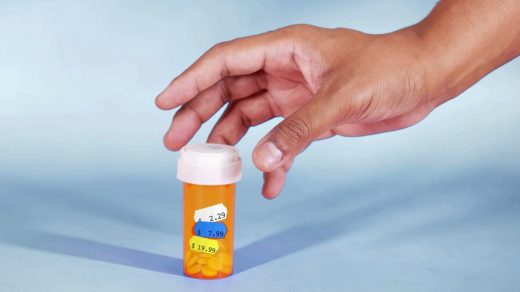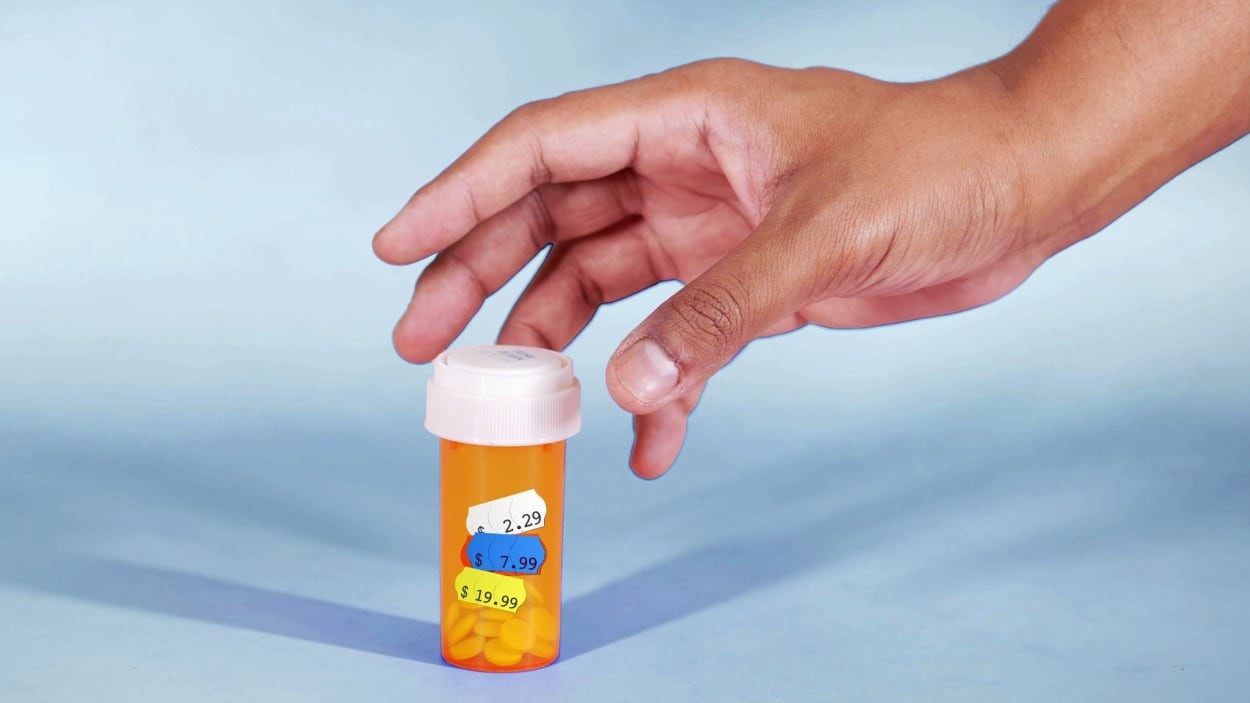Frankly, CVS’s simplified drug pricing plan is more confusing than ever
America’s largest retail pharmacy chain, CVS, unveiled a new drug pricing formula on Tuesday, a move it said will simplify costs while demystifying what it charges consumers for prescriptions. The company is healthcare’s latest player to commit to overturning decades of practice, which has patients paying prices for their medicines in a way that’s extremely complicated, largely unpredictable, and for the most part determined by pharmacy benefit managers (PBMs) that negotiate rates that drugmakers charge.
One peculiar feature of American healthcare is the fact that how much pharmacies spend to buy drugs isn’t always directly tied to their costs at the counter. But to demystify the process, CVS says it’s moving towards basing drug prices on the amount paid to acquire them, plus an extra fee disclosed to consumers—a model sometimes called “cost plus.” Markups or service fees will appear separately, like how restaurant receipts itemize taxes and tip below the meal’s price.
“We are leading with an approach that will shift how our retail pharmacy is compensated by implementing a more transparent and sustainable model that fairly aligns pharmacy reimbursement to the quality services we provide,” Chief Pharmacy Officer Prem Shah said in CVS’s announcement, explaining that the decision marks “a foundational step towards more pricing clarity for consumers.”
Industry observers have lauded the move as radical. A “fundamental change in how pharmacy services are priced” and “legitimate step toward transparency” is how Drug Channels CEO Adam Fein described it (December 22, 2023). Yet offering improved price clarity doesn’t automatically equate to lower prescription drug costs—which are now so high, 82% of Americans call them “unreasonable.”
CVS shared more details about the pivot with Fast Company. And here’s one bottom line: The truth is many consumers won’t see an immediate price improvement, if ever a major one at all.
As to whether this “simplifies” the drug-buying process, that will be up to consumers. But here are some key takeaways.
Prices are being “reset,” not lowered
CVS offered this to explain how the move will help everyday consumers:
What CVS is doing—at the pharmacy and at the PBM—is rewiring or resetting how reimbursement happens in an industry that has become very complex and largely follows a model based on how things used to be a decade ago . . . Only we can take this kind of step forward, given our leadership on the PBM and pharmacy.
Admittedly, that doesn’t make it a more “consumer” story—but it is a necessary foundational step to make this entire system more consumer-friendly, preserve choice for payors, and maintain a viable retail pharmacy industry.
Other experts echo CVS’s root belief that lower prices could follow greater price transparency—but as more of an ancillary effect, they argue.
“As a consumer right now, you can ask for the MSRP of your medicine like you’re buying a car, and they’ll have no idea what it is,” says Nick Fabrizio, a healthcare industry consultant and senior lecturer at Cornell University. “Your charge at the pharmacy is the result of all the sausage getting made in the middle. How is the sausage made? You have no idea.”
For drug pricing, the sausage-making involves everything from price negotiation, to mail order as a variable, to formulary design and utilization management intended to encourage the use of cost-effective and medically appropriate drugs. “If it becomes transparent for the person picking up the script, they are going to see the sausage in the middle and can say, ‘Wait a minute, what are these other fees?’ That transparency should bring down the cost,” says Fabrizio.
Savings “will not happen broadly right away”
CVS gave Fast Company a series of hypothetical questions it could see consumers having at their pharmacy counter: “Do my mom and dad see savings at the pharmacy? If so, which drugs will they save on? How much savings will they get? How do they get the savings?”
It then answered these candidly, by saying: “That will not happen broadly right away for consumers. And even so, it will depend initially on which drugs they are getting.” According to CVS, the change will make savings “happen a lot faster than they otherwise would,” though, and this switch should have “a longer-lasting impact on how drugs are reimbursed” than if CVS had done nothing.
So, which group will see the benefits first? CVS notes it will be those who are paying with cash: “The earliest consumer impact would be first half of 2024, for those using cash pharmacy discount cards at CVS Pharmacy.”
Customers with prescription drug coverage must wait longer, until 2025. CVS warns they may not directly pocket the savings, which go to the payer (in their case, as non-cash paying customers, their insurer or plan sponsor). CVS still holds that these savings should trickle down, though they’ll ultimately be determined by “how the model is adopted, which clients use it, and how they apply it to their benefit.”
Prices could go up for some customers
The big eyebrow-raiser is that CVS is also warning that some drug prices will increase, though it isn’t ready yet to speculate about which.
Wait, you may be asking—why would CVS’s pricing change make medications more expensive? It’s because drug makers could respond by raising their own prices.
“If you have three products in your portfolio that you’re selling to consumers,” Fabrizio says, “and because of price transparency, customers see that one has an 80% profit margin and another has 10%, then you may have to bring down the price of the drug with the 80% profit margin because of public outcry. And you may need to bump up the one with the 10% margin to make back money.”
Patented, name-brand drugs cost more (i.e., are likelier to be in the 80% margin realm), while generic drugs cost less and therefore have lower margins. That would suggest hikes following price transparency are more liable to be concentrated on the cheaper generic drugs than the name-brand ones, whose already topped-out margins may need to drop.
The pricing adjustment follows growing public pressure
CVS’s move mimics one that billionaire entrepreneur Mark Cuban has built into his new discount drug company, Cost Plus Drugs, whose tagline is “No middlemen. No price games. Huge drug savings.” The company sells medicine to customers for a flat 15% markup on wholesale, plus the pharmacy fees. Cuban has been a vocal critic of America’s dysfunctional healthcare, and is being credited with pressuring CVS’s latest change.
In mid-November, the pharmacy benefit manager Express Scripts, a unit of insurance giant Cigna, also unveiled a way for clients to pay 15% over wholesale plus a flat service fee for medications, to offer them a more “seamless experience.”
Cost Plus Drugs’ backers, which include a growing number of Congress members, frequently note the price-gouging exercised by the PBMs. For instance, at Cost Plus Drugs, a 30-day supply of cancer drug imatinib costs $72. If ordered through CVS, the same drug runs more than $17,000.
It’s worth noting that America has three big PBMs, and the largest one—CVS Caremark—belongs to CVS (which, for the record, also owns the insurer Aetna). After Caremark comes Cigna’s Express Scripts and OptumRx, a UnitedHealth Group subsidiary. Together, these three control 80% of the country’s prescription benefits market. CVS holds that PBMs are a crucial part of resolving the current prescription drug care mess: “PBMs are one of the few parts of the prescription drug supply chain specifically dedicated to lowering costs.” But because these outfits serve as a broker between pharmacies, insurance carriers, and drug manufacturers, they make their money by up-charging drug prices or pocketing part of whatever rebate they can negotiate when retail pharmacies agree to buy certain medicines. Critics like Cuban argue that PBMs artificially spike prices without providing real value to consumers.
The consumer verdict on CVS’s new pricing scheme will ultimately be decided at the checkout counter—even though here, the term discount is relative.
“Let’s say it costs you $50 to fill the script for one of your medications,” says Nick Fabrizio. “If it costs you $47 the next month, how much better do you really feel? We can say this is going to lead to price decreases. But if it’s $3 less, is that really going to change your lifestyle?”
(42)



